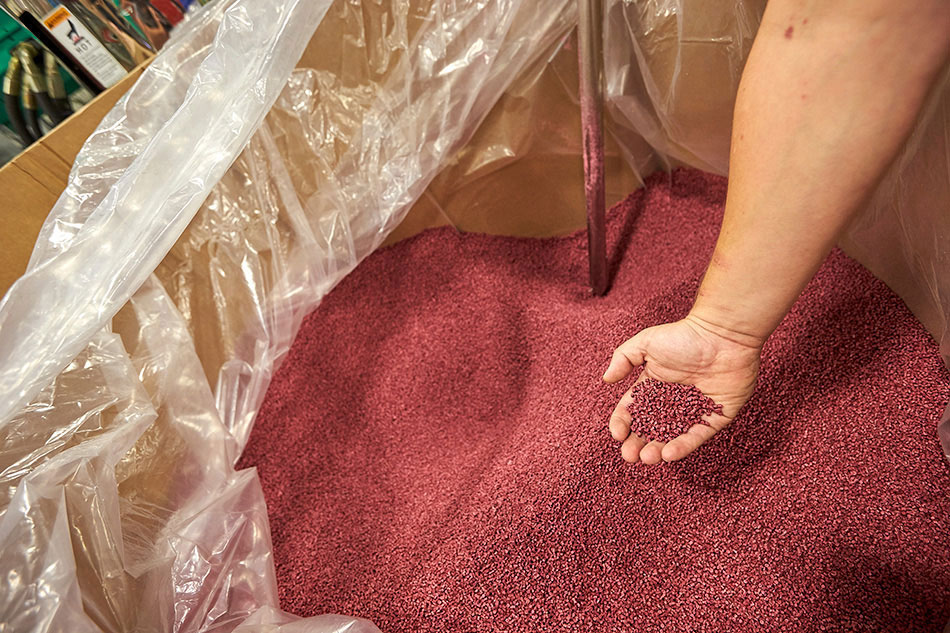Nailing down the right material for an injection molded part is a crucial detail. With an array of plastic resins to choose from — each with its own unique qualities — the choice of material will factor into both the injection molding process, as well as how the part functions once molded. Because of this, it’s important to carefully consider which material aligns most with the form and function of the part itself, paying special attention to specific qualities such as utility, durability, and budget. Before becoming overwhelmed by the options, consider some key details about what is being molded, and which materials are available, to help guide the choice about which plastic is right for your injection molded part.
The Triangle of Needs: Considerations About the Part
As mentioned, the material chosen for the part will have an impact on how the part functions out of the mold. With that in mind, there are three factors related to the structure of the part — a sort of triangle of needs — to weigh and balance to help determine which materials would be better suited for each unique part:
- Design/Composition: If there are specific design or composition requirements for the part to function correctly, this will immediately determine some materials as better options than others. For instance, whether the part needs to be flexible or rigid, clear or matte finished, or impact-resistant or electrically insulated, each of these form factors will have materials better suited for each property.
- Regulatory Considerations: Each industry comes with unique compliance standards. Depending on the use, a part may need to be food safe, or medical grade, or ISO compliant, and each particular compliance variation will have a material that aligns with those needs.
- Environment: While environmental impact and sustainability are important considerations, this refers more specifically to the environment the part will be primarily exposed to, and what sort of needs this place on the part. If the part is submerged — whether in water, or another liquid/chemical — or in contact with an open flame, it can help narrow down which material is best suited to the job. Additionally, what kind of temperature variance will the part be exposed to? Will it be outside, in extreme cold? Or on the opposite end, will it be enclosed in extreme heat and pressure? These factors all play a part in the material consideration.
Common Materials for Injection Molding
With the various combinations available, there are thousands of material options available for injection molding. Instead of going through each potential combination and variant, lets focus on the most commonly available and widely used materials:
- ABS (Acrylonitrile Butadiene Styrene): A widely-used thermoplastic known for being impact resistant with strong rigidity, ABS also offers resistance against the majority of corrosive materials. Not suitable for food grade applications, and flammable, ABS makes up for this by being cost effective and adaptable.
- PC (Polycarbonate): Transparent, heat resistant, and impact resistant, PC is particularly effective for optical uses (like in common eyewear), and makes an excellent substitute for glass. While not corrosive resistant or scratch proof, it is a solid material for more rigid applications.
- ABS-PC: As can be surmised from the above, ABS-PC combines properties of both ABS and PC, gaining the flexibility of ABS with the strength and heat resistance of PC.
- HDPE (High-Density Polyethylene): Rigid and resistant to a majority of chemicals, HDPE is the hardest of the polyethylene materials. As can be gathered from its name, the material is dense, and as such, can be prone to sinking in areas with thicker walls.
- PP (Polypropylene): A lightweight, versatile, and flexible material, PP is well suited to high production runs. Known for its wide use in consumer packaged products (such as water bottles), PP also sees a variety of uses in medical and laboratory applications.
- PA (Polyamide): Known most commonly as nylon, PA is known for its strength and ability to withstand high temperatures. Mostly chemically resistant — except to strong acids and bases — PA comes in a variety of grades, offering a scale of hardness, abrasion resistance, and impact strength.
This only scratches the surface of some of the most common materials for injection molding. A variety of other materials exist, with a number of additional properties and specific applications, so by no means are parts limited to the materials listed above. In fact, when making the decision about which plastic to choose, consider consulting with the engineering staff at Hansen Plastics. Able to provide deeper insights into the specific applications of each material, the employee-owners at HPC will work with you and our resin suppliers so they can recommend the appropriate material for your part. Adaptable, efficient, and knowledgeable, the staff at HPC will be capable of guiding you through the process to mold even your most complex parts. For more details on the technologies and techniques Hansen Plastics utilizes, visit HansenPlastics.com, and for more details on producing parts with HPC, reach out today.



